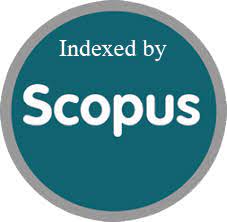The 30-day outcome of neonates operated for esophageal atresia
DOI:
https://doi.org/10.52783/jns.v11.1049Keywords:
Esophageal atresia, Surgical outcomes, Tracheoesophageal fistula, Resource restrictedAbstract
Background: Despite great advances in the overall management of neonates with esophageal atresia (EA), many complications leading to morbidity still occurs. Most complications can be treated conservatively, but effective management is needed to reduce long-term morbidity.
Methods: A retrospective cohort study was performed on neonates treated for EA with/without a tracheoesophageal fistula (TEF) between 2001 and 2020. Data were collected from patient records, discharge summaries, and surgical notes. The information recorded included: maternal and neonatal demographics, information regarding the diagnosis, and details surrounding the surgery.
Results: During the 19-year study period, 53 neonates with a mean gestational age of 36.7 weeks were included for analysis. Forty-nine percent presented with an associated anomaly (most commonly, complex cardiac lesions). The majority (83%) had a primary repair on a median of day 3 of life. Nineteen neonates had a surgical complication 30 days post-repair: 7 minor (contained leaks and a chylothorax) and 12 major complications including anastomotic strictures, major anastomotic breakdowns, a recurrent TEF, and 5 surgery-related mortalities.
Conclusions: This study showed less morbidity and mortality of neonates born with EA, despite a high incidence of associated anomalies, in a resource-restricted hospital. It is important to highlight that even with limited resources, centers in low- or middle-income countries can have good outcomes.
Downloads
Metrics
References
Roberts K, Karpelowsky J, Fitzgerald DA, Soundappan SSV. Outcomes of oesophageal atresia and tracheo-oesophageal fistula repair. J Paediatr Child Health. 2016; 52:694–8. available from: https://doi.org/10.1111/jpc.13211.
Rothenberg SS. Esophageal atresia and tracheoesophageal fistula malformations. In: Ashcraft H, Editor. Holcomb Ashcraft's Pediatric. Surgery. 7th ed., 2020, p. 437–57.
Syed MK, Al Faqeeh AA, Othman A, Almas T, Khedro T, Alsufyani R, et al. Management of early post-operative complications of esophageal atresia with tracheoesophageal fistula: A retrospective study. Cureus. 2020; 12. Available from: https://doi.org/10.7759/cureus.11904.
Friedmacher F, Kroneis B, Huber-Zeyringer A, Schober P, Till H, Sauer H, et al. Postoperative complications and functional outcome after esophageal atresia repair: Results from longitudinal single-center follow-up. J Gastrointest Surg. 2017; 21:927–35. Available from: https://doi.org/10.1007/s11605-017-3423-0.
Gross R. Atresia of the oesophagus. In: Saunders W, editor. Surg. Infancy Child. 1st Ed., Philadelphia: 1953.
Bairdain S, Zurakowski D, Vargas SO, Stenquist N, McDonald M, Towne MC, et al. Long-gap esophageal atresia is a unique entity within the esophageal atresia defect spectrum. Neonatol. 2017; 111:140–4. Available from: https://doi.org/10.1159/000449241.
Dindo D, Demartines N, Clavien PA. Classification of surgical complications: A new proposal with evaluation in a cohort of 6336 patients and results of a survey. Ann Surg. 2004; 240:205–13. Available from: https://doi.org/10.1097/01.sla.0000133083.54934.ae.
Beale P, Loveland J, Lakhon KA. Oesophageal atresia. In: Pediatr Surg Cham: Springer International Publishing; 2020, p. 527–33. Available from: https://doi.org/10.1007/978-3-030-41724-6_48.
Global PaedSurg Research Collaboration. Mortality from gastrointestinal congenital anomalies at 264 hospitals in 74 low-income, middle-income, and high-income countries: a multicentre, international, prospective cohort study. Lancet. 2021; 398:325–39. Available from: https://doi.org/10.1016/S0140-6736(21)00767-4.
Forster C, Zamiara P, Lapidus-Krol E, Chiang M, Scaini V, Haliburton B, et al. Outcomes of multi-gestational pregnancies affected by esophageal atresia – tracheoesophageal fistula. J Pediatr Surg. 2019; 54:2080–3. Available from: https://doi.org/10.1016/j.jpedsurg.2019.04.026.
Weissbach T, Kassif E, Kushnir A, Shust‐Barequet S, Leibovitch L, Eliasi E, et al. Esophageal atresia in twins compared to singletons: In utero manifestation and characteristics. Prenatal diagnosis. 2020; 40:1418-25.
Sfeir R, Bonnard A, Khen-Dunlop N, Auber F, Gelas T, Michaud L, et al. Esophageal atresia: Data from a national cohort. J Pediatr Surg. 2013; 48:1664–9. Available from: https://doi.org/10.1016/j.jpedsurg.2013.03.075.
Wang B, Tashiro J, Allan BJ, Sola JE, Parikh PP, Hogan AR, et al. A nationwide analysis of clinical outcomes among newborns with esophageal atresia and tracheoesophageal fistulas in the United States. J Surg Res. 2014; 190:604–12. Available from: https://doi.org/10.1016/j.jss.2014.04.033.
Osei-Nketiah S, Hesse AAJ, Appeadu-Mensah W, Glover-Addy H, Etwire VK, Sarpong P. Management of oesophageal atresia in a developing country: Is primary repair forbidden? Afr J Paediatr Surg. 2016; 13:114. Available from: https://doi.org/10.4103/0189-6725.187801.
Dingmann C, Eaton S, Aksnes G, Bagolan P, Cross KM, De Coppi P, et al. ERNICA consensus conference on the management of patients with esophageal atresia and tracheoesophageal fistula: diagnostics, preoperative, operative, and postoperative management. Eur J Pediatr Surg. 2020; 30:326–36. Available from: https://doi.org/10.1055/S-0039-1693116.
Okata Y, Maeda K, Bitoh Y, Mishima Y, Tamaki A, Morita K, et al. Evaluation of the intraoperative risk factors for esophageal anastomotic complications after primary repair of esophageal atresia with tracheoesophageal fistula. Pediatr Surg Int. 2016; 32:869–73. Available from: https://doi.org/10.1007/s00383-016-3931-0.
Teague WJ, Karpelowsky J. Surgical management of oesophageal atresia. Paediatr Respir Rev. 2016; 19:10–5. Available from: https://doi.org/10.1016/j.prrv.2016.04.003.
Lal DR, Gadepalli SK, Downard CD, Ostlie DJ, Minneci PC, Swidler RM, et al. Challenging surgical dogma in the management of proximal esophageal atresia with distal tracheoesophageal fistula: Outcomes from the Midwest Pediatric Surgery Consortium. J Pediatr Surg. 2018; 53:1267–72. Available from: https://doi.org/10.1016/j.jpedsurg.2017.05.024.

Published
How to Cite
Issue
Section
License
Copyright (c) 2022 Corné de Vos, L van Wyk, D Sidler, P Goussard

This work is licensed under a Creative Commons Attribution 4.0 International License.
You are free to:
- Share — copy and redistribute the material in any medium or format
- Adapt — remix, transform, and build upon the material for any purpose, even commercially.
Terms:
- Attribution — You must give appropriate credit, provide a link to the license, and indicate if changes were made. You may do so in any reasonable manner, but not in any way that suggests the licensor endorses you or your use.
- No additional restrictions — You may not apply legal terms or technological measures that legally restrict others from doing anything the license permits.










